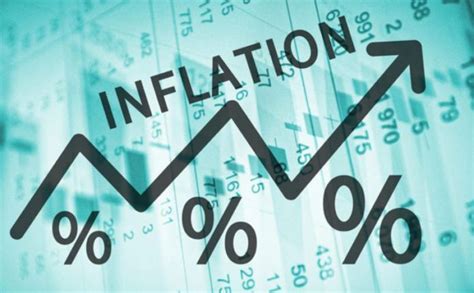Propelled by surging costs for gas, food and housing, consumer inflation jumped 7.9% over the past year, the sharpest spike since 1982 and likely only a harbinger of even higher prices to come.
The increase reported Thursday by the Labor Department reflected the 12 months ending in February and didn’t include most of the oil and gas price increases that followed Russia’s invasion of Ukraine on Feb. 24. Since then, average gas prices nationally have jumped about 62 cents a gallon to $4.32, according to AAA.
Even before the war further accelerated price increases, robust consumer spending, solid pay raises and persistent supply shortages had sent U.S. consumer inflation to its highest level in four decades. What’s more, housing costs, which make up about a third of the government’s consumer price index, have risen sharply, a trend that’s unlikely to reverse anytime soon.
The government’s report Thursday also showed that inflation rose 0.8% from January to February, up from the 0.6% increase from December to January.
For most Americans, inflation is running far ahead of the pay raises that many have received in the past year, making it harder for them to afford necessities like food, gas and rent. As a consequence, inflation has become the top political threat to President Joe Biden and congressional Democrats as the midterm elections draw closer. Small business people say in surveys that it’s their primary economic concern, too.
Seeking to stem the inflation surge, the Federal Reserve is set to raise interest rates several times this year beginning with a modest hike next week. The Fed faces a delicate challenge, though: If it tightens credit too aggressively this year, it risks undercutting the economy and possibly triggering a recession.
Energy prices, which soared after Russia’s invasion of Ukraine, jumped again this week after Biden said the United States would bar oil imports from Russia. Oil prices did retreat Wednesday on reports that the United Arab Emirates will urge fellow OPEC members to boost production. U.S. oil was down 12% to $108.70 a barrel, though still up sharply from about $90 before Russia’s invasion.
Yet energy markets have been so volatile that it’s impossible to know if the decline will stick. If Europe were to join the U.S. and the United Kingdom and bar Russian oil imports, analysts estimate that prices could soar as high as $160 a barrel.
The economic consequences of Russia’s war against Ukraine have upended a broad assumption among many economists and at the Fed: That inflation would begin to ease this spring because prices rose so much in March and April of 2021 that comparisons to a year ago would show declines.
Should gas prices remain near their current levels, Eric Winograd, senior economist at asset manager AllianceBernstein, estimates that inflation could reach as high as 9% in March or April.
The cost of wheat, corn, cooking oils and such metals as aluminum and nickel have also soared since the invasion. Ukraine and Russia are leading exporters of those commodities.
Even before Russia’s invasion, inflation was not only rising sharply but also broadening into additional sectors of the economy. Many prices have jumped over the past year because heavy demand has run into short supplies of items like autos, building materials and household goods.
But even for some services unaffected by the pandemic, like rents, costs are also surging at their fastest pace in decades. Steady job growth and high home prices are encouraging more people to move into apartments, elevating rental costs by the most in two decades. Apartment vacancy rates have reached their lowest level since 1984.
In the final three months of last year, wages and salaries jumped 4.5%, the sharpest such increase in at least 20 years. Those pay raises have, in turn, led many companies to raise prices to offset their higher labor costs.
Soaring energy costs pose a particularly difficult challenge for the Fed. Higher gas prices tend to both accelerate inflation and weaken economic growth. That’s because as their paychecks are eroded at the gas pump, consumers typically spend less in other ways.
Read More From The PatriotAmerican
That pattern is akin to the “stagflation” dynamic that made the economy of the 1970s miserable for many Americans. Most economists, though, say they think the U.S. economy is growing strongly enough that another recession is unlikely, even with higher inflation.


Americans can lay this at the feet of President Biden, his administration and the Democratic party. It didn’t have to be this way but their greed and ambitions for more power, bigger government and deals with their cooperate backers has brought us to this.
War on fossil fuels started it. Wanting Americans to reject natural gas and gasoline for auto’s they made it harder for oil producers to pump. Everything is tied to oil and gas, EVERYTHING. If it goes up so does everything else. Our whole economy is greased and operating from oil and gas.